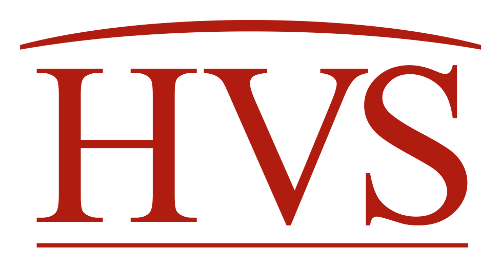 When staffing shortages hit at peak season, it’s not just guest satisfaction that suffers — room inventory shrinks, and operations strain under pressure. Across U.S. hospitality, uncertain immigration policy is now a key factor shaping workforce strategy. Hotels are adapting with agility: amplifying internal talent pipelines, refining recruiting, and fortifying preparedness against potential enforcement disruptions.
When staffing shortages hit at peak season, it’s not just guest satisfaction that suffers — room inventory shrinks, and operations strain under pressure. Across U.S. hospitality, uncertain immigration policy is now a key factor shaping workforce strategy. Hotels are adapting with agility: amplifying internal talent pipelines, refining recruiting, and fortifying preparedness against potential enforcement disruptions.
The Current Landscape of Hospitality Labor
Immigration remains a critical element in the hospitality labor matrix. The travel and tourism sector supports roughly 15 million U.S. jobs, with hotels directly employing about 8 million, and approximately one-third of those roles held by immigrants.
Within traveler accommodations, over 31% of workers are foreign‑born, ranking the industry fourth among private-sector fields by foreign-born workforce share. Foreign-born individuals accounted for 19.2% of the civilian labor force in 2024, up from 18.6% in 2023.
That rise underscores how hospitality continues to rely on immigration to staff roles that remain difficult to fill domestically.
Here’s how these dynamics play out differently across regions:
- Regional dependency: Resort destinations such as Cape Cod, the Florida Keys, and mountain towns rely heavily on seasonal workers — especially when demand doubles or triples during peak periods.
- Urban labor competition: In cities like Miami, which leads the U.S. with 65% foreign-born hotel staffing, hotels compete directly with restaurants and retail for the same limited talent.
- Rural challenges: Smaller towns with limited public transportation often struggle to attract local workers willing to commute. In these cases, foreign-born employees — particularly those on seasonal visas — form the backbone of operations.
- International gateway cities: Immigration-driven workforce diversity is not only a necessity but a competitive advantage in international gateway cities such as New York, Los Angeles, and Chicago, enabling hotels to cater to multilingual guests and culturally varied service expectations.
Immigration Policy and Operational Implications
Visa availability remains a defining factor in workforce planning. Congress caps H-2B visas at 66,000 annually, split equally between the first and second halves of the fiscal year. For FY 2025, DHS added 64,716 supplemental visas, bringing the total available to more than 130,000 — allocated among returning workers and nationals of selected countries.Yet even with the expansion, the first‑half cap was reached in September 2024, and the second‑half cap in March 2025 , underscoring persistent demand.
Several operational realities have emerged in response to these constraints:
- Enforcement shifts: In early 2025, DHS reversed a directive that had shielded hotels and restaurants from enforcement actions. As a result, hotels issued 36% more background checks from January through June than in the same period in 2024, aiming to stay compliant and avoid legal risks.
- Persistent vacancies: A 2024 industry survey found that 71% of hotels with open positions could not fill them, despite proactive recruitment efforts — a gap that translates into service disruptions, reduced flexibility, and strain on training budgets and morale.
- Industry advocacy: Trade groups are pressing Congress and agencies for reforms to address chronic staffing gaps, from visa expansion to streamlined processing.
- Fluctuating administrative priorities: The policy landscape is further complicated when agendas shift year by year. For example, processing times for H-2B and J-1 visas can vary drastically depending on agency staffing levels and political focus. This variability forces hotel operators to build contingency plans that account for both best- and worst-case timelines. Some have begun using predictive analytics to model different staffing outcomes based on visa approval rates — an approach that mirrors revenue management strategies and reflects how deeply immigration is now embedded in workforce forecasting.
Strengthening Sustainable Talent Pipelines
Forward-looking hotels are turning inward, identifying role overlaps and investing in cross-training so employees can flex between departments. Structured programs allow front desk associates to cover concierge shifts or culinary staff to support banquet service during high-volume events.They are also building stronger connections with vocational schools, local colleges, and regional workforce centers — relationships that not only supply a flow of future talent but also help position hospitality as a viable, long-term career path. These partnerships are proving especially effective in markets where immigration-dependent hiring is more vulnerable to policy shocks.
To make these pipelines truly sustainable, many leaders are:
- Diversifying recruitment channels — combining early and strategic H-2B applications, exploring J-1 trainee programs, and considering EB-3 employment-based sponsorships where feasible
- Building compliance readiness — conducting internal Form I-9 reviews, maintaining clear documentation protocols, and appointing designated enforcement-response leads
Case Studies
Cote Hospitality strategically uses the H-2B visa program to bring in seasonal employees from Mexico, Jamaica, South Africa, Romania, and Barbados. At Grand View Lodge in Minnesota, around 30 H-2B workers arrive each year to meet peak-season demand — essential for maintaining service in a location where domestic labor alone cannot meet needs. Alongside these seasonal hires, Cote invests in mentorship and leadership development to promote from within, reducing long-term dependency on any single visa pathway.Similarly, at The Grand Hotel at the Grand Canyon, Xanterra supplements local hires with H-2B visa holders. For other properties, the company favors a mix of J-1 trainee programs and the Bridge Summer Work Travel program through partner colleges. This multi-channel approach creates staffing flexibility across its portfolio and minimizes disruption when one visa pathway faces constraints.
Executives at Marriott and Hilton have repeatedly emphasized the need for comprehensive immigration reform, citing it as a cornerstone for workforce stability. As Hilton CEO Chris Nassetta put it: “One of the most important issues in our industry for time and eternity has been workforce ... and the need for comprehensive immigration reform.” This public stance amplifies industry-wide dialogue and puts pressure on policymakers to consider visa expansion and streamlined processes.
Looking Ahead: Policy, Resilience, and Coordination
Immigration policy may remain unpredictable, but workforce resilience doesn’t have to. Hotels can strengthen their operational footing by:- Engaging in ongoing scenario planning that tracks visa windows and prepares contingency staffing
- Combining multiple visa types to reduce reliance on any single source
- Leveraging industry associations to advocate for reform and share best practices with policymakers
- Integrating more self-service technology in low-touch areas while redeploying staff to high-touch, high-value guest interactions
- Experimenting with seasonal service menus or rotating amenities to maintain quality without overextending limited teams
That resilience starts with foresight:
- Regularly assess the staffing structure and identify potential vulnerabilities, rather than waiting until a policy change, visa delay, or sudden turnover forces a scramble
- Pay particular attention to roles or departments that rely heavily on foreign-born talent, where recruitment pipelines may be more susceptible to external factors
- Pinpoint potential pressure points early so action can be taken before gaps become emergencies
- Identify employees who consistently deliver, think beyond their immediate responsibilities, and show curiosity and drive to take on more
- Provide intentional opportunities for these high-potential team members to stretch their skills, such as cross-training in different departments, shadowing senior leaders, or taking on short-term assignments outside their comfort zone
- Strengthen the property’s ability to cover sudden gaps while signaling to staff that ambition and adaptability are rewarded
A coordinated approach — blending operator insight, industry advocacy, and policy engagement — offers the best chance to maintain stable and adaptable staffing models in the years ahead. When operators blend proactive talent development, flexible staffing approaches, technology-driven efficiencies, and strong industry advocacy, they create the capacity to weather policy shifts, fill critical gaps quickly, and sustain exceptional guest experiences long-term.
Building Stability: Hands-on Strategies
Hotel staffing will always be affected by external forces — from shifting policies to demographic trends — but leadership lies in how teams prepare. Operators can reinforce stability by:- Creating internal training hubs that allow for quick cross-department redeployment during surges
- Establishing emergency staffing networks with peer properties to share resources in times of need
- Developing clear compliance playbooks that outline step-by-step procedures for audits and document checks
Hospitality Workforce Resilience in a Shifting Immigration Landscape
By nurturing internal pipelines, diversifying recruitment, investing in compliance readiness, and actively collaborating across the industry, hotels can anchor operations despite shifting immigration landscapes.From local lodges to global chains, hospitality leaders are building resilience through intentional pipelines, diversified visa strategies, and policy advocacy. Real-world examples showcase that reliance on one tactic is too risky. A blended, strategic toolkit is the strongest anchor.
As the travel industry evolves, so too must workforce strategies. By adapting to policy uncertainty with thoughtful planning, collaboration, and investment, hotels can continue to deliver exceptional service, even in an unpredictable policy environment. The stakes are high, but so are the opportunities for leadership and innovation.
Republished from the Hotel Business Review with permission from www.HotelExecutive.com
Immigration Policy and the Hospitality Workforce: Navigating Labor Challenges with Strategic Resilience
About Alice Sherman
Alice Sherman is Executive Vice President & Managing Director, Americas at HVS Executive Search, based in Los Angeles and Washington, D.C., where she leads the firm’s practice across North and South America and oversees a high-performing team. She joined the executive search industry in 2016 after a career in fine dining restaurants and boutique hotels, where she held roles in recruitment, training, operations, openings, development, PR, and communications. This hands-on industry experience informs her strategic approach to building executive teams across all functional areas for hospitality and private equity clients. Alice serves as President of the Board for Jewish National Fund’s YPLA chapter and holds a Bachelor’s Degree from the University of Miami. For more information, contact Alice at [email protected]

0 Comments
Success
It will be displayed once approved by an administrator.
Thank you.
Error